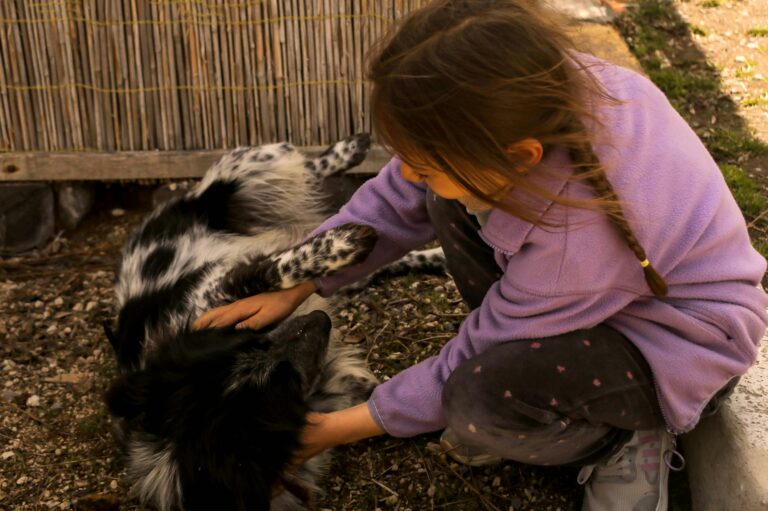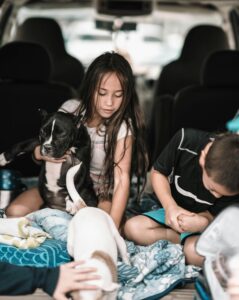Welcoming a dog into a home with children can be one of the most rewarding experiences for a family. But without structure, the combination can quickly become chaotic. Kids do not automatically know how to behave around dogs, and dogs often misinterpret children’s energy and movements. That is where structured training comes in.
As professional dog trainers, we have helped countless families in St. Louis bridge the communication gap between kids and canines. In this blog, we will walk you through proven strategies to help everyone live together safely and peacefully.
Why Structure Matters With Kids and Dogs
Dogs are creatures of habit, and children are naturally energetic and unpredictable. That combination can lead to stress, anxiety, or even behavioral issues if expectations are not clear.
Without guidance, your dog may develop problems like jumping, mouthing, barking, or snapping in frustration. And children, if not taught appropriate interactions, may unknowingly provoke those responses.
That is why it is so important to have a plan that involves both training your dog and educating your children.
Focus on Foundation Obedience First
Before a dog can be expected to behave around children, they must understand and respond reliably to basic commands:
- Sit and Down
- Come when called
- Place (stay on a mat or bed)
- Leave it
- Loose leash walking
These skills help you control your dog’s movements, manage their energy, and prevent unwanted behavior before it starts.
Our Basic Obedience Program is designed specifically to teach these foundational behaviors in real-world environments, including homes with active families.
Teach Your Kids the Right Way to Interact
Just as your dog needs structure, your children need clear guidelines on how to safely and respectfully engage with the family dog. Here are some key rules to put in place:
- No hugging the dog or getting in their face
- No disturbing the dog while eating or sleeping
- No rough play, grabbing, or climbing on the dog
- Always ask before petting and use calm voices and gentle hands
Younger children especially should be taught that the dog is not a toy. Practice with stuffed animals if needed to help them understand proper handling.
For more on how to keep your dog calm around unpredictable environments like group classes or high-energy households, read our post on keeping your dog focused during summer group events.
Involve the Whole Family in Training
When kids participate in the dog’s training, it strengthens the bond and improves communication. Under adult supervision, kids can help reinforce commands, reward good behavior, and participate in short training sessions.
Here are a few ways to get them involved:
- Use kibble or treats for games like “Find It” or “Red Light, Green Light”
- Let them give simple commands like “Sit” or “Down”
- Teach them to calmly reward the dog when it responds correctly
This approach is not just fun. According to the American Kennel Club, guiding kids and dogs to play together respectfully helps both build confidence and trust.
Use Safe Spaces and Supervision
One of the most important strategies is to supervise all interactions between young children and dogs. Even the most well-behaved dog should never be left alone with a small child. Accidents can happen quickly.
Create a dedicated “safe space” where your dog can rest undisturbed. This could be:
- A crate in a quiet room
- A dog bed in a gated area
- A mat where they have been taught the “Place” command
Teach your children to respect this space and understand it is not a play zone. If your dog shows signs of stress like whining, pacing, or hiding, it is a clear signal they need a break.
Set Expectations Through Routine
Predictability reduces anxiety for both kids and dogs. Having a daily routine teaches your dog when to expect walks, playtime, meals, and downtime. This structure also makes your life easier as a parent.
Consider scheduling:
- Potty breaks before and after school hours
- Short training sessions before dinner
- Crate time or quiet time during homework or family meals
With consistency, your dog will begin to settle more quickly and become more responsive to your family’s rhythm.
Checklist: Creating a Kid-Friendly, Dog-Smart Home
Here is a quick checklist to guide your family setup:
- Establish and reinforce obedience basics
- Educate your children on respectful interactions
- Include kids in supervised training games
- Use crates and gates to create safe boundaries
- Monitor all interactions closely
- Stick to a predictable routine
You Do Not Have to Do It Alone
Many families struggle in the early stages of integrating a dog into a busy household. That is completely normal. Whether you are dealing with jumping, pulling, nipping, or constant chaos, we can help.
Our Basic Obedience Program is ideal for families who want reliable commands, calmer behavior, and a more manageable home life. We customize training plans to include your children and help everyone build confidence together.
Ready to build a better relationship between your dog and your family? Reach out today using our contact page and let us help you get started.


